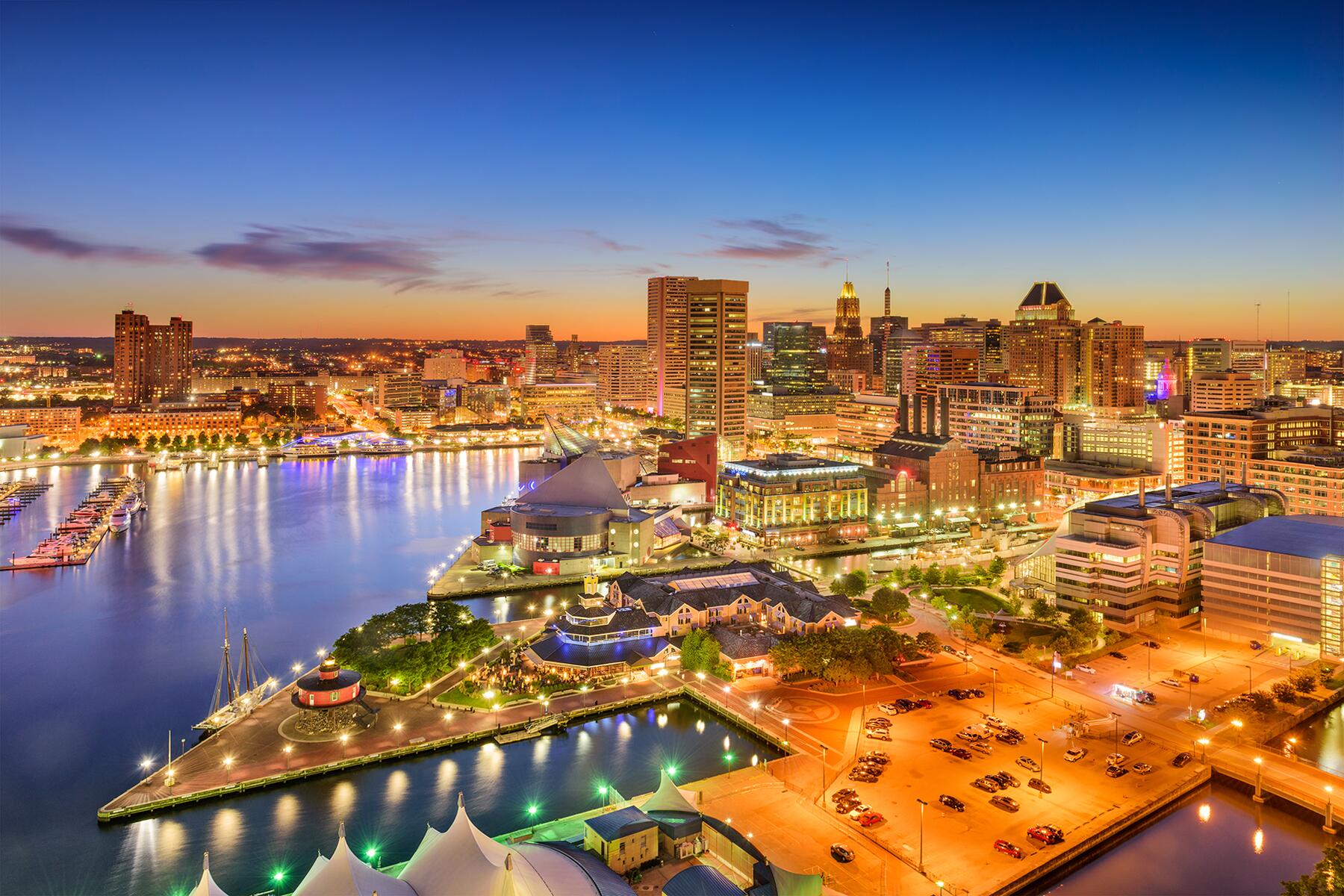If only these hotel walls could talk.
The nation’s capital has long catered to visiting politicos, heads of state, movie stars, and others, so it’s no wonder a plethora of esteemed hotels throughout the years have been decked out to impress the best.
The oldest hotel in Washington, D.C., dates back to 1818 (Willard), and was a gathering place for presidents and the birthplace of the mint julep, but even some of the newer ones have stories to tell. Anyone ever heard of Watergate (opened in 1965)?
Here are 10 of Washington, D.C.,’s most intriguing historic hotels. Old or newer, for better or worse, each one has made a mark in American history: scandals, inaugural balls, star-studded concerts, cultural salons, first lady silver teas, presidential sightings, and the list goes on.
The Hay-Adams
The Hay-Adams rises above Lafayette Square, its columns, walnut wainscoting, and molded ceilings paying homage to Old World grandeur. Dignitaries, celebrities, lobbyists, CEOs, and presidents—Obama and his family stayed here before moving into the White House in 2009—have retreated to its classically styled rooms (with modern conveniences, of course) since opening as an apartment hotel in 1928. It’s named for John Hay, President Abraham Lincoln’s personal secretary, and historian Henry Adams, a descendant of Presidents John Adams and John Quincy Adams, who lived in neighboring houses on this spot at 16th and H Streets (both razed to build the hotel). The two friends and their wives spearheaded one of Washington’s leading salons, drawing Theodore Roosevelt, Mark Twain, Henry James, and sculptor Augustus Saint-Gaudens. The historic Off the Record bar in the basement feels frozen in time.
INSIDER TIPSome rooms have balconies overlooking the White House.
Willard InterContinental
The city’s oldest hotel, the opulent Willard, rose a block from the White House in 1904, replacing previous iterations dating from 1818. This one, 12 stories of eclectic Beaux-Arts style, was hailed as Washington’s first skyscraper. The grand dame has hosted every president since Franklin Pierce in 1853, along with other luminaries, including Charles Dickens, Buffalo Bill, P.T. Barnum, and Martin Luther King, Jr., who added finishing touches to his “I Have a Dream” speech in the lobby before heading over to the March on Washington.
Its 335 lavish, traditionally styled guest rooms feature crystal lighting, striped wallpaper, and gilded accents (and state-of-the-art technology), while the cavernous lobby remains historically elegant with marble pillars and walls, high, gilded ceiling, and some of the best people-watching in town. The Café du Parc restaurant and mahogany-paneled Round Robin Bar (birthplace of the mint julep) are favorite hangouts (notably for politicos taking a break from the nearby White House), while Peacock Alley hosts high tea served on delicate tea sets.
INSIDER TIPOff the lobby, you’ll find a mini-museum highlighting the hotel’s most important events. One interesting story concerns President U.S. Grant, who liked to relax in the lobby with his cigars and brandy, drawing petitioners looking for political favors. Grant called them “lobbyists,” and even though Merriam-Webster states the term derived early in England, he no doubt popularized it.
Recommended Fodor’s Video
The Jefferson
Many consider this 99-room boutique hotel, within walking distance of the White House, as the city’s best. Beloved for its simple-yet-timeless elegance and meticulous service, it’s got a lot going for it for sure, including rich historical details, eclectic antiques, and Jeffersonian influences—notably documents signed by the third president in the lobby, for whom the hotel is named. There’s a cozy library with books and a fireplace and an upscale cocktail lounge that resembles an 18th-century gentleman’s club (its all-glass bar glows amber). During a relatively recent renovation, the original skylight was uncovered, which now adds luminosity to the seasonal, Spanish-inspired Greenhouse restaurant. Built as a luxury apartment hotel in 1923, the Jefferson has hosted distinguished guests ever since, including President Obama, who housed his campaign office here. Rooms are small but classic and warm, with dark-wood furniture, custom fabrics imprinted with images from Monticello (the former president’s Virginia estate), and some with views of the Washington Monument.
INSIDER TIPThe Jefferson is very friendly toward furry, four-legged guests, and its amenities include dog bowls and beds, filtered water, and walking maps.
Tabard Inn
For a peek into what living in Washington in the early 1920s might have been like, look no farther than the Tabard Inn near Dupont Circle. Marie Willoughby Rogers opened this rustic hotel in 1922 (making it the capital’s oldest continuously running hotel), and ever since, it’s been a hub of social gatherings, a place to escape urbanity. Occupying several Victorian-era row houses, the 35-room labyrinthine retreat captures the charm of an old English manor, from its mix of stylish antiques to rambling staircases leading to eclectically decorated rooms to the roaring fireplace in the furniture-filled parlor. There are no TVs, and the Wi-Fi can be spotty (and the floors creak and groan), but that adds to the yesteryear charm (never fear—there are sufficient modern conveniences). The farm-to-table restaurant, serving seasonally fresh, contemporary American cuisine, has a covered patio and several intimate dining rooms.
The Mayflower
This gilded-and-marble extravaganza in downtown D.C. has been heralded as the Hotel of Presidents ever since hosting Calvin Coolidge’s inauguration upon its opening in 1925. President Truman called it the second-best address after 1600 Pennsylvania Avenue. Featuring a gleaming marble-and-mirror, block-long lobby; 581 contemporary, elegant guest rooms; and more inlaid gold than any other D.C. building after the Library of Congress, it’s no wonder this grand dame is a go-to for dignitaries, celebrities, and royalties. Oh, and scandals as well—including D.C. mayor Marion Barry’s bust here in 1989 for possessing cocaine; Bill Clinton hugging Monica Lewinsky (she stayed here while the scandal unfolded); and New York governor Eliot Spitzer’s rendezvous with a prostitute here in 2008. The in-house brasserie, Edgar, has an elaborate breakfast buffet.
The Watergate Hotel
The luxurious, 336-room Watergate Hotel probably needs no introduction, thanks to the notorious break-in that unfolded here in 1972, setting President Nixon’s downfall in motion. The behemoth structure, which opened in 1967 in the Foggy Bottom neighborhood, is somewhat dark and brutalist avant-garde in design, but a 2016 renovation, mixing midcentury modern with political intrigue, gives guests a Mad Men vibe (the staff’s uniforms were designed by Mad Men’s costume designer). Cheeky nods to the scandal prevail, including pencils stating in gold letters: “I stole this from the Watergate Hotel,” and coasters embossed with: “I am not a crook.”
Statement-making, soft-cornered furniture decorates the guest rooms (most of which have Potomac River views). The cavernous, curving lobby is where you’ll find the whiskey bar, set off by a floating wall of amber-lit whiskey bottles. The Top of the Gate rooftop lounge is nothing but modern, with 360-degree views over Washington’s monuments and the Potomac River.
INSIDER TIPYou can stay in (or tour) the Scandal Room, where the break-in was orchestrated. It’s decorated with period artifacts, including a manual typewriter, reel-to-reel tape recorder, newspaper clippings, official White House photos, and letters signed by Nixon.
Washington Hilton
This massive, 1,107-room structure up Connecticut Avenue near Dupont Circle, built in 1962-65, retains its “modern” persona, with concrete wall panels and large windows. Through the years, it has hosted prestigious gatherings headed by presidents, world leaders, and other prominent figures. Its column-free ballroom can hold up to 4,200 people for a reception (and 2,600 for a seated dinner), after all—explaining why President Ronald Reagan’s official inaugural ball was celebrated here in 1981; legendary musical artist Jimi Hendrix performed here in 1968, and the White House Correspondents’ Association dinner takes place here every year. But all of this is not why it’s most famous, or infamous, as the case may be. On March 30, 1981, John Hinckley, Jr., came within an inch of assassinating President Ronald Reagan. The president was exiting a side door after giving a speech when Hinckley, standing in the crowd of well-wishers, fired a revolver six times, critically wounding the president and three others. To this day, locals call the hotel the “Hinckley Hilton.”
INSIDER TIPThe attempted assassination site is on T Street, NW, to the right of the hotel’s main entrance. Dubbed the “President’s Walk,” its open canopy was removed after the shooting, and a brick drive-through enclosure was built to allow future visiting presidents to move from the hotel into the car without public access.
Morrison-Clark Historic Inn
It may sound strange, but this 114-room boutique inn near the Washington Convention Center combines two 19th-century Italianate-style townhouses with a Chinese church—and it works in the most elegant of ways with its mélange of Victorian traditionalism and Asian modernism. The ensemble started off in 1864 as separate residences for two wealthy Washingtonians enjoying the good life off fashionable Massachusetts Avenue. Then, for much of the 20th century, they were owned by the Women’s Army and Navy League, who combined the houses and converted them into a club where enlisted soldiers, sailors, and airmen could stay as they passed through the nation’s capital.
High society women also gathered here, including every first lady from Grace Coolidge to Nancy Reagan, hosting their silver teas and Sunday coffees. The structures became an inn in 1987, quickly becoming one of the city’s most lavishly decorated holiday destinations. During a 2013 renovation, a neighboring Chinese church was incorporated into the floorplan as the lobby and a newer wing. Today, the Morrison-Clark is a cozy, eclectic, calming place with old and new furnishings, a relaxing brick courtyard, and a restaurant serving creative American plates.
Omni Shoreham Hotel
Feeling every bit like an elegant country retreat in the heart of the city, this sprawling, 834-room hotel in the residential neighborhood of Woodley Park has been the go-to retreat for Illuminati, musicians (the Beatles stayed here during their first USA tour), and world leaders since opening its doors in 1930. President John F. and Jacqueline Kennedy sipped cocktails in the Blue Room, and President Harry Truman was often seen playing poker in Room 406D with fellow politicos. It may be a little worn these days, but the elegance still shines through. You’re greeted by the stately, art deco lobby filled with arches, vaulted ceilings, and sparkling chandeliers. Guest rooms are classically decorated with dark wood furniture and pale-yellow walls—though it’s the grounds that command the most attention. Eleven acres overlooking Rock Creek Park include a large terrace with lounge chairs, lush green plantings (including 9,000 tulips and cherry trees that bloom every spring), and an outdoor heated pool.
The St. Regis Washington, D.C.
Open since 1926, the St. Regis whisks you away from downtown DC’s bustle into a sumptuous Italian Renaissance ode to the Old World. The opulent lobby has red velvet drapes, Florentine gold ceilings, crystal chandeliers, and homey touches such as blooming orchids and stacks of coffee-table art books. Guest rooms feel traditional with dark-wood furniture, damask drapes, and Italian Renaissance-painted chandeliers (modern conveniences assure 21st-century comfort). But it’s some of its stories that make it most memorable. For example, presidents, including Ronald Reagan, slipped away from the nearby White House for years to the barbershop. And Howard Hughes kept a permanent suite here during World War II, making it available at no cost to uniformed servicemen in his absence. Don’t miss the luxury saloon, where handcrafted cocktails (including the Capitol Mary—a Bloody Mary incorporating Old Bay spices) are served amid traditional decor, complete with a Chippendale sofa and blazing fireplace.
INSIDER TIPThe close of the day is celebrated every evening in the lobby with a champagne ceremony, in which champagne bottles are flamboyantly opened with a saber. The tradition dates back to 1904 when John Jacob Astor IV founded the original St. Regis Hotel in New York City.






